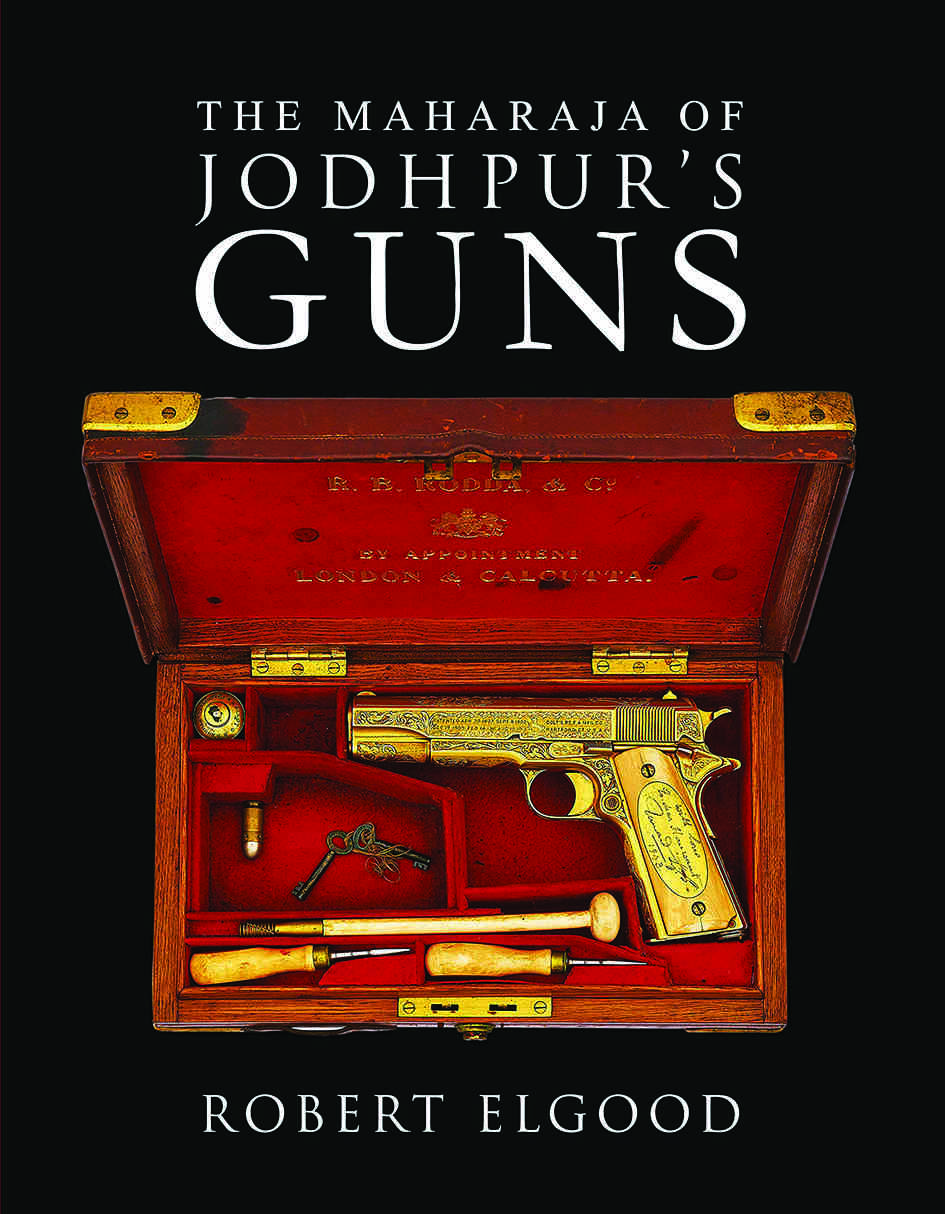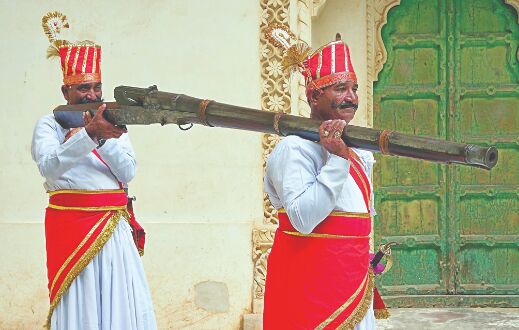"The Maharaja of Jodhpur's Guns" | Stories of steel and gunpowder
The book discusses the worldwide medieval diffusion of firearms technology and Arab, Ottoman, European and Chinese influences on the development of Indian firearms; elaborates Arif Mohammad
Author: Robert Elgood
Publisher: Niyogi Books
The Mehrangarh Museum Trust at Jodhpur has preserved the historic monuments and artefacts of the Rathores of Jodhpur with great success and shared their collection with the world in a series of books on different aspects of Rajput life and culture. This book is a continuation of that effort, with a special focus on the weapons in the Jodhpur collection.
Some of the best Indian matchlocks in the subcontinent were owned by the erstwhile Jodhpur State and were admired by English visitors at the Delhi Durbar in 1911. The collection which was established by the Maharajas of Jodhpur includes indigenously designed weapons as well as modern British and American sporting guns, shotguns, revolvers and automatic pistols by many of the great makers of the twentieth century. The images on the front cover of the book (a gold plated Cased Colt .32 pistol, which looks like it could have been used in a James
Bond movie) and the rear cover (a detail of the enamelled ornamentation on a Holland & Holland 12 bore shotgun) offer tempting glimpses of the treasures that lie within.
This is the first book to be written specifically on historic Indian firearms. Robert Elgood, an expert on the historic arms of Hindu India and the Islamic world, has published several books including Arms and Armour at the Jaipur Court (2015) and Rajput Arms and Armour: The Rathores and their Armoury at Jodhpur Fort (2017) by Niyogi Books. This addition to his oeuvre adds to the study of the collection of weapons at the Mehrangarh Fort Museum.

The book begins with initial chapters on the invention of gunpowder weapons and their arrival in medieval India, matchlock guns with revolving mechanisms in the Portuguese eastern empire, and the Indian matchlock. Chapter 4 in the volume is the solid core of the book, cataloguing the numerous lamchars, swivel guns or Shuturnāls, seventeenth to nineteenth-century banduks, Sindhi jezails, Baluchistan matchlocks, Indian blunderbusses, matchlock pistols and combination weapons, powder flasks, miniature cannon, British military guns, European civilian guns, nineteenth- and twentieth-century European and American pistols, and late nineteenth- and twentieth-century air pistols.
The later chapters include an analysis of advances in sporting guns in India in the nineteenth century, a chapter on hunting with spear and gun in Rajasthan, a fascinating set of pages transcribed from the 1926 hunting diary of Maharaja Umaid Singhji, a catalogue of Maharaja Umaid Singhji’s sporting guns and a chapter on the experimental guns made in Mehrangarh Fort under the direction of Maharaja Hanwant Singhji, who had a keen interest in weapons.
This large volume features more than 350 unique images of guns and Rajput paintings from private collections showing their use. Apart from offering scholars and collectors the opportunity to see the superb Jodhpur collection, it offers insights into Rajput traditions relating to hunting and war. For instance, a fine miniature painting depicts Maharaja Takat Singh going hunting along with his 30 wives!
The book is elegantly designed, with each gun in the collection and its description laid out in a manner that is easy on the eye. The stunning landscapes that form the endpapers of the book – the opening view of the majestic Mehrangarh Fort and the closing view of the Jaswant Thada, the cenotaph of the former rulers of Jodhpur, also place the book in its context, conveying a sense of the rugged landscape from which the brave Rajput warriors emerged and where they waged war and indulged in sport. This is a book that a gun collector, history buff, or a sporting enthusiast will enjoy immensely. The sporting stories in the book include anecdotes that describe both the danger and excitement of hunting, as well as humorous episodes.
Add it to your book collection and you’ll enjoy dipping into it time and time again to admire the features of a particular weapon, its inscriptions, minute detailing and unique history. As this collection illustrates, aspects of Indian history when well-preserved, and ably catalogued and analysed, can produce a work that holds its own with other notable catalogues of weapons from museums around the world. Apart from being a record of the significant Jodhpur collection, this book is a testimony to the special place weapons occupy in the heart of a Rajput warrior and gives us an insight into the gallant ethos of an earlier time.



